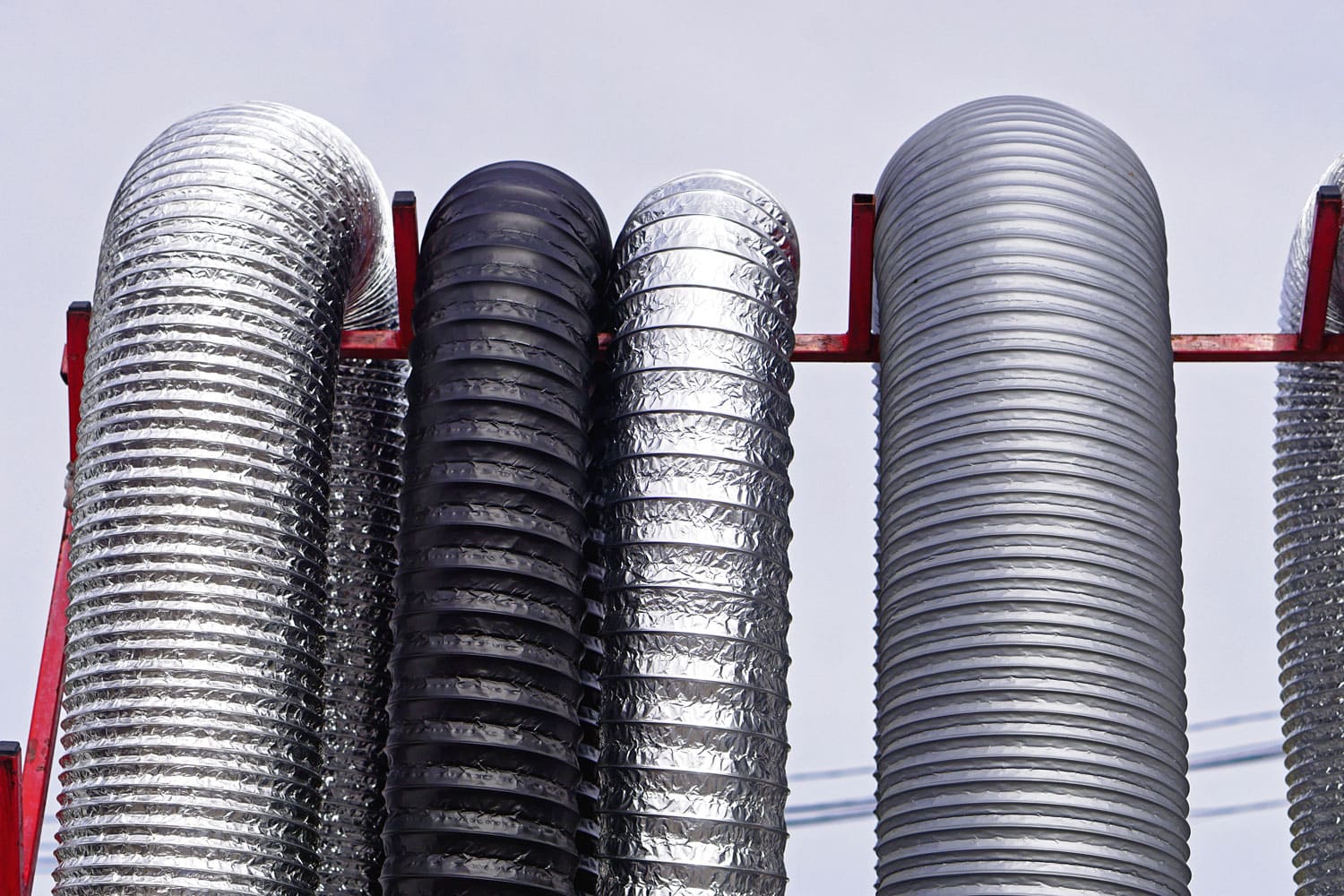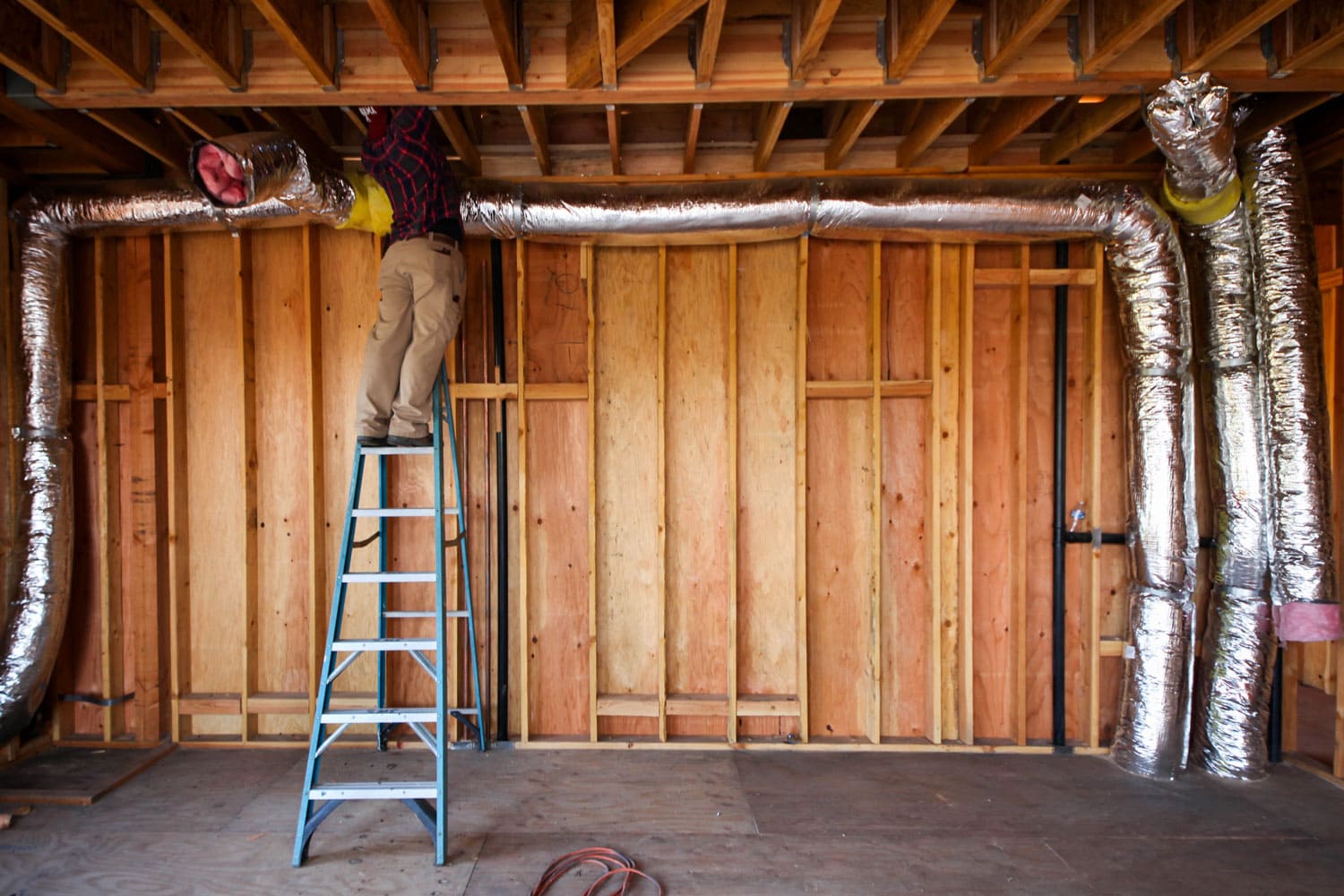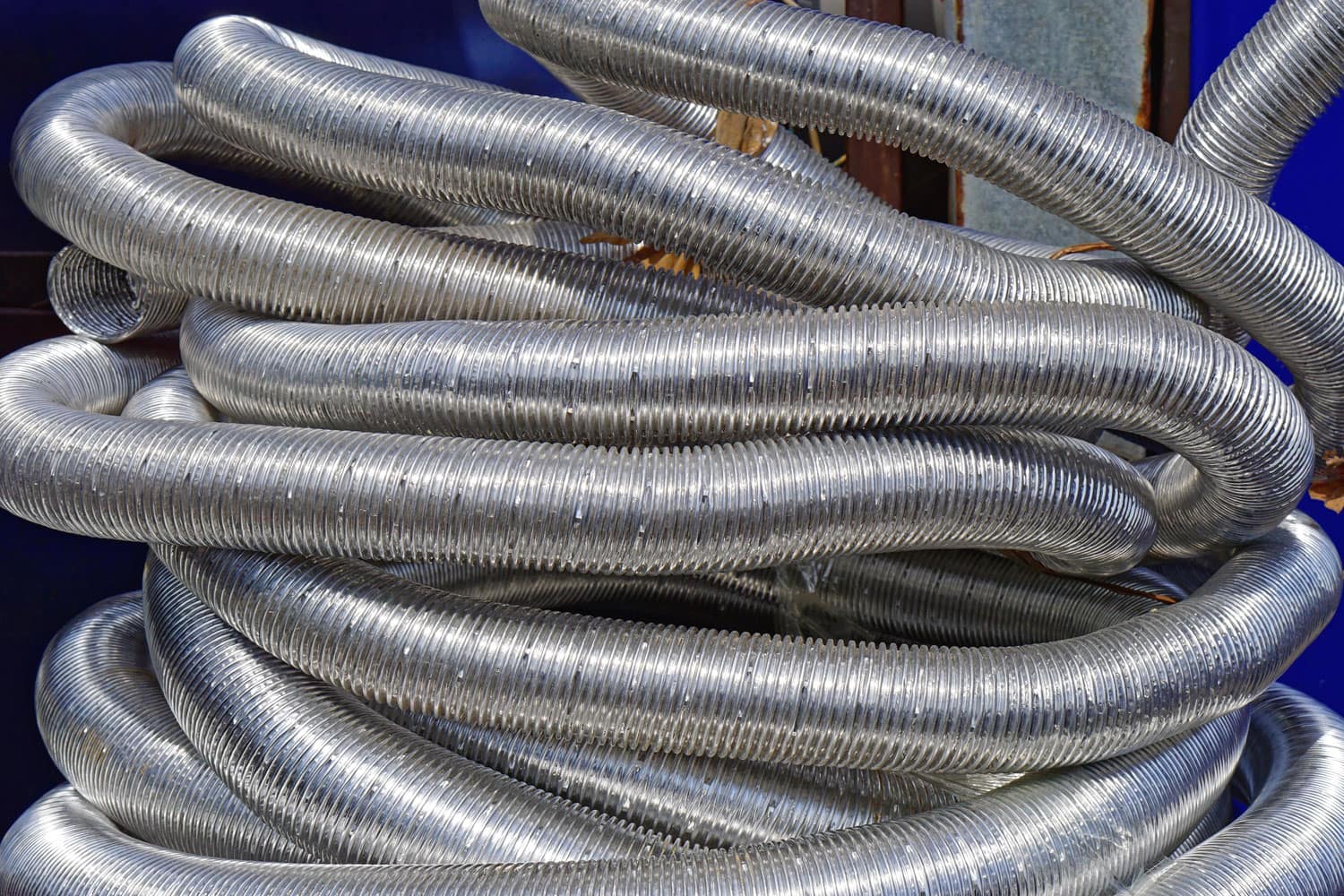Ductwork is a fixture in homes and vehicles that sometimes doesn't get much thought. However, you should know how to cut it when it needs repairs or replacing. We've researched the best ways to do so, and we found cut-through answers.
Flexible ducting can be cut in four ways depending on its material. You can cut it using the following:
- Utility/duct knife
- Tin Snips
- Hack saw
- Metal/wire cutters
Read on as we elaborate on the cutting procedure for ductwork to help you make adjustments and customize your flexible ducting.
![Construction worker standing on a ladder installing air conditioning flexible duct in new construction building, How To Cut Flexible Ducting [4 Ways!]](https://hvacseer.com/wp-content/uploads/2022/12/Construction-worker-standing-on-a-ladder-installing-air-conditioning-flexible-duct-in-new-construction-building-How-To-Cut-Flexible-Duc.png)
Cutting Flexible Ducting
Flexible ducting might have layers or different thicknesses. The material of your flexible ducting determines how you cut it. These are the ways to cut flexible ducting available on the market today.
Utility/Duct Knife
You can use a duct knife to cut through flexible ducting made of fiberglass insulation in a plastic wall and polyethylene or foil casing. To cut the wire coil, use a wire cutter only. Experts don't recommend using tin snips are the blade becomes jagged.
Click here to buy this duct knife on Amazon.
Watch the following video to see what we mean.
https://www.youtube.com/watch?time_continue=77&v=IasBJrE22bc&feature=emb_logo
Tin Snips
Flexible metal ducting such as aluminum or galvanized steel can be cut using tin snips. Pick the correct tin snips based on the cut type. They leave clean cuts on straight or curved sections.
Hack Saw
A hack saw is ideal for cutting flexible PVC ducting. The rigidity of the PVC differs from that of aluminum and galvanized steel. Hack saw cut through the PVC in clean cuts making the cutting process easy.
Tap here to see this hack saw on Amazon.
Metal/Wire Cutters
Only use metal or wire cutters on metal but not on aluminum or steel. Flexible ducting might have wires or metal in it, and the ideal tool for this job is a metal or wire cutter. Tin snips don't always cut the wire properly, as they come in many thicknesses.
Types Of Flexible Ducting
There are several ways to cut flexible ducting because of its different materials. Ducting is for ventilation, and its thickness and location allow different materials to have an even playing field.

You will find flexible ducting in:
- Metal: It comes in 3 to 8 inches in diameter with a maximum length of 65 feet.
- Polyurethane: The area of use determines what thickness of PVC ducting you need. It comes in light or heavy-duty capacities.
- Aluminum: You find 3 to 20-inch diameter pipes with or without insulation.

Although you can purchase flexible ducting in other shapes, the standard ones are round.
What To Do Before Cutting Flexible Ducting
Safety precautions and proper preparation are critical to make any job a walk in the park. So, before you start cutting any flexible ducting, you should:
- Material: Determine the material and cutting methods recommended by the manufacturer.
- Tools: Pick the right tools.
- Protection: Wear protective eyewear and gloves.
- Size: Measure, mark, and cut what you need. Stretch the flexible ducting to get the exact size and avoid sagging during installation.
- Fixating: Secure the flexible ducting to ensure it doesn't move when cutting it.
- Cut: Poke a pilot hole in the ducting using a screwdriver before you cut it.
Once you follow these steps cutting and installation will be easy.
Check out these protective gloves on Amazon.
Dos And Donts When Cutting Flexible Ducting
Flexible ducting comes in several sizes, and its wiggly worm look makes it hard for first-time remodelers to cut it properly. It can be squeezed into a more compact size for shipping, meaning you can order in surplus and get a relatively small package.
Dos
- Pull it out to measure it correctly and avoid sagging upon installation.
- Turn the sleeves of the insulation in to keep the insulation from flying around.
- Flexible ducting need support in the insulation area for proper airflow.
Don'ts
- Making too many cuts and rejoins as it reduces the efficiency of flexible ducting.
- Sealing the ducting carelessly or haphazardly is a setback. Don't use duct tape because it doesn't work.
Applications Of Flexible Ducting
This versatile product is ideal for several ventilation systems. Unlike rigid ducting, flexible ducting can be installed in hard-to-reach areas without reducing its functionality.
You can see flexible ducting in crawl spaces, attics, return air applications, and attachments to bathroom fans. However, don't install flexible ducting in range hoods and dryer areas, as it doesn't meet the IRC regulations. Flexible ducting isn't suitable for temperatures higher than 250 degrees Fahrenheit.
Is Flexible Ducting Worth The Buzz?
Homeowners and experts have their preferences when it comes to installing HVCA systems. Moreover, flexible ducting is a product that isn't easily dismissable.
Its pros are:
- Affordability: A little goes a long way.
- Time efficient: Installation is easy and takes little time, especially in hard-to-reach areas.
- Minor to no leaks: When installed correctly, it doesn't leak since there are few seams.
- Not noisy: If you want ductwork that doesn't vibrate, causing creepy noises, then use flexible ducting.
However, flexible ducting can have some downsides:
- Limited durability: It is prone to tears and rips from sharp tools or rodents.
- Poor maintenance: Cleaning flexible ducting can be a hassle. The soft outer shell doesn't hold firm and can be damaged by harsh cleaning agents.
- Not energy efficient: The curves and twists reduce the airflow, making your appliance work harder to circulate air.
Can You Replace Only A Section Of Flexible Ducting?
Yes, you can. Since flexible ducting is easily damaged, it requires repairs more often than rigid ducting. Remember, you cannot patch holes in flexible ducting. It's ineffective, and it's time-consuming.
You should remove the damaged section of your flexible ducting and replace it with a new one. Unless you know how to install flexible ducting correctly, only attempt to do so with the help of a professional.
Is It Possible To Join Pieces Of Flexible Ducting?
Flexible ducting has a lot of lengths. But, if you require even longer flexible ducting for your HVAC, you can elongate it by adding another piece. The key to effectiveness is proper sealing. The seal should be seamless to avoid loss of performance.
The pieces of flexible ducting aren't directly connected. A device known as a splice aids in proper connection. The flexible ducting is pulled on the beads on the splice, and nylon draw bands are used to fasten the inner coils.
Mastic is applied on the seams, and the insulation and outer line are pulled together and taped using more mastic. Additionally, it would help if you used fiberglass mesh tape in combination with mastic.
Here's a video demonstrating how to join flexible ducting correctly to a splice, a boot, and to return ducts.
Can You Clean Flexible Ducts?
Yes, you can clean the inside and outside of flexible duction. However, manufacturers don't recommend homeowners clean their flexible ducting to avoid rapturing or ripping it. Although flexible ducting deteriorates faster than rigid ducting, the process can speed up by improper cleaning. For longer-lasting flexible ductwork, engage the services of a professional.
Must You Support Flexible Ducting?

It's a must to support flexible ducting because it sags. For the best performance, flexible ducting should be supported at intervals. The sag allowed is not more than half an inch, and the supports should be installed at four feet intervals for proper airflow through the ductwork.
Straps are the best supports for flexible ducting. However, ensure they don't cut into the airflow and restrict airflow.
How Long Does Flexible Ducting Last?
According to manufacturers, flexible ducting should last between 10 to 25 years. Unfortunately, it isn't always the case due to poor flexible duct maintenance. Flexible ducting lasts five to ten years, after which it's completely replaced and rebuilt.
Surprisingly, this figure applies to all flexible ducting materials. Installation in mice and rat-infested attics and crawl spaces, improper installation, and cleaning contributes to the faster quality deterioration of the flexible ducting.
How Much does Flexible Ducting Cost?

The cost of flexible ducting depends on the material of ducting you want to purchase. For example, flexible aluminum ducting plus installation costs between $6.50 to$11.50 per linear foot. Non-metallic flexible ducting installation costs $6.50 to $10 per linear foot. Remember to get a quotation on whether the ducting you want is insulated or uninsulated.
Summing It Up
There are four ways to cut flexible ducting effectively. With a hack saw, duct knife, metal/wire cutters, or snips, you can cut the flexible ducting to the length you desire for installation. Although it might seem like an alternative, kitchen knives won't yield the best results.
To join two pieces of flexible ducting to each other or vents, use mastic and fiberglass mesh and not duct tape. Ensure you install flexible ducting correctly for it to be energy and cost-efficient.
Browse these posts for more insight on:



